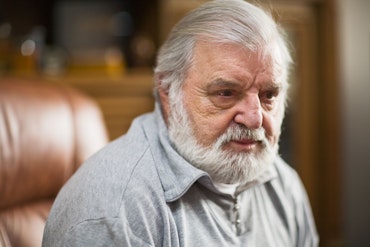Dementia soars in Aboriginal communities
The rate of dementia in Aboriginal Australians is three times that of Australia’s non-Indigenous population, a three year study into how Aboriginal Australians age has found.
The rate of dementia in Aboriginal Australians is three times that of Australia’s non-Indigenous population, a three year study into how Aboriginal Australians age has found.
The preliminary results from the study were presented at Alzheimer’s Australia’s 15th National Conference in Hobart last week.
Professor Tony Broe, a senior principal research fellow at Neuroscience Research Australia (NeuRA), conducted the Koori Growing Old Well Study: a census of all resident Aboriginal people aged 60 years and over, across five urban and regional Indigenous communities: Kempsey, Nambucca, Coffs Harbour, La Perouse and Campbelltown.
Most Aboriginal Australians live in urban or regional areas like these, with only about 30% living in remote areas.
“The number of older Aboriginal Australians is increasing rapidly, and yet little is known about their health and dementia rates,” Professor Broe said.
“A previous study in the remote Kimberley region of Western Australia found higher rates of dementia at younger ages, but research in the majority urban population has been lacking.
“Like remote communities, however, Aboriginal people in urban areas have a disproportionately high burden of many of the risk factors and systemic diseases that have been linked to dementia in studies around the world.”
Professor Broe added improved understanding of this issue had important implications for ensuring access to appropriate services for Aboriginal people with dementia and their families and for future service development.
Glenn Rees, Alzheimer’s Australia chief executive, said the study yet again demonstrated the need for increased research.
“This would help us provide culturally appropriate services for Australia’s indigenous community,” Mr Rees said.
Of the causes for dementia in Aboriginal Australians, Alzheimer’s disease was the most common. Vascular dementia and dementia due to head trauma were also common, but alcohol related dementia was uncommon.
The researchers believe that this higher rate of dementia could be associated with factors across the whole life course, from disadvantage in early childhood onwards, and including mid late life systemic diseases.
The information gathered during the Koori Growing Old Well Study is now being used to develop education and services on the Mid North Coast, Campbelltown, Western Sydney and La Perouse for older Indigenous people with dementia, and their families.











![The new Aged Care Act exposure draft is slated for release in December of 2023, but advocates hope to see it rolled out on January 1, 2024. [Source: Shutterstock]](https://agedcareguide-assets.imgix.net/news/articles/wp/agedcareact__0811.jpg?fm=pjpg&w=520&format=auto&q=65)












Comments